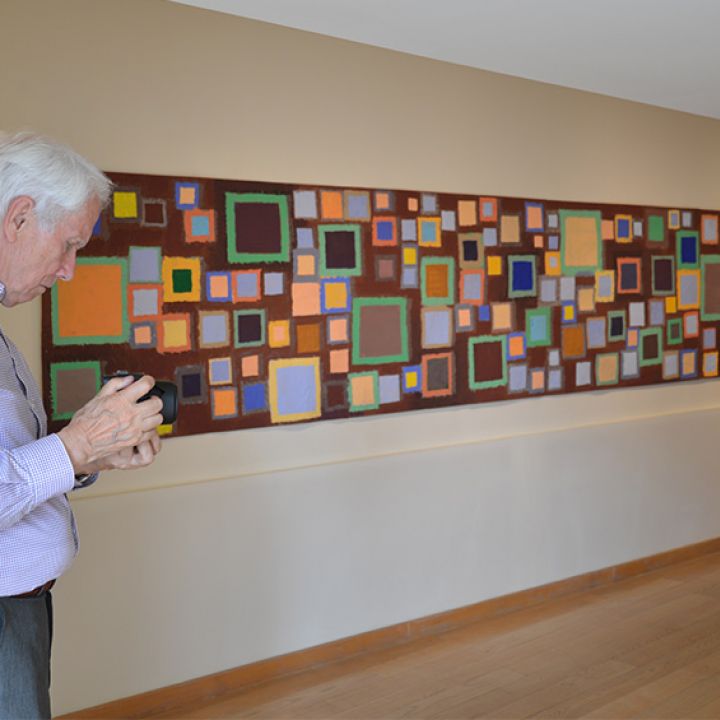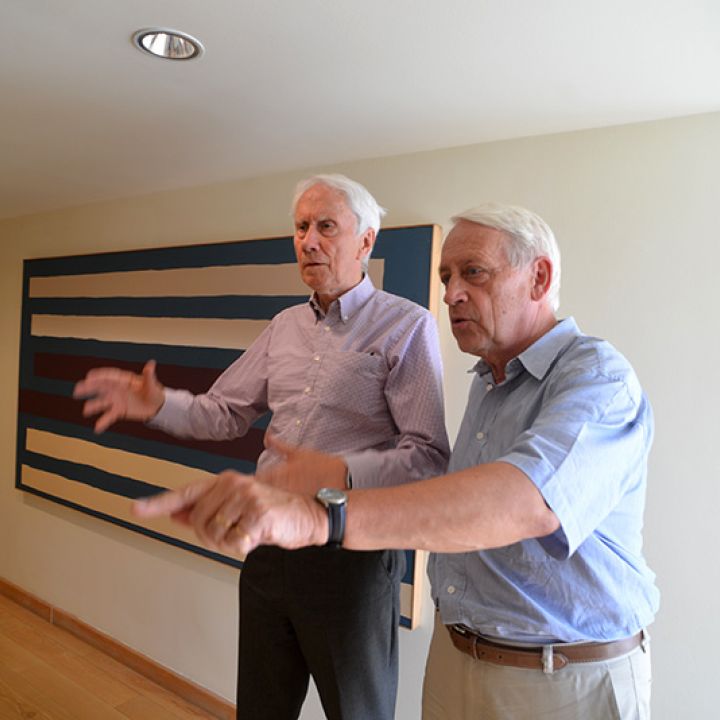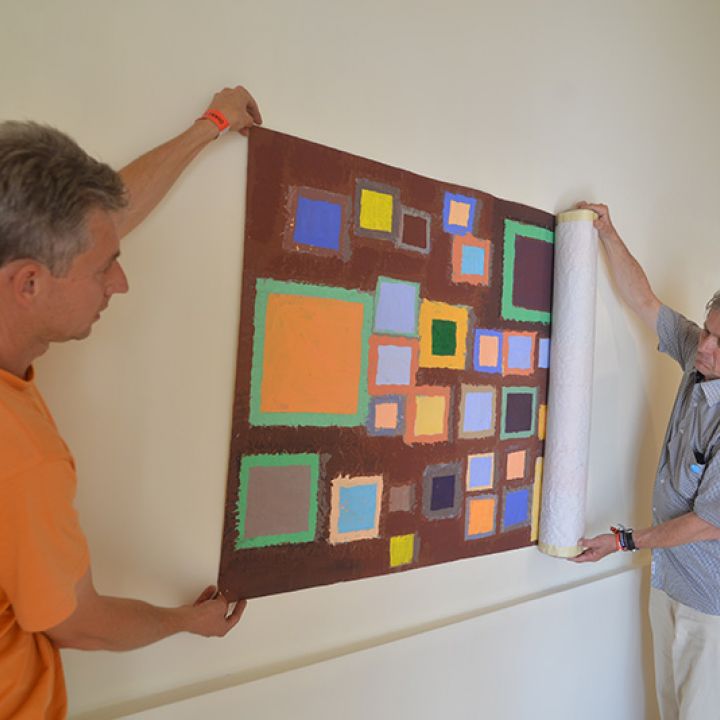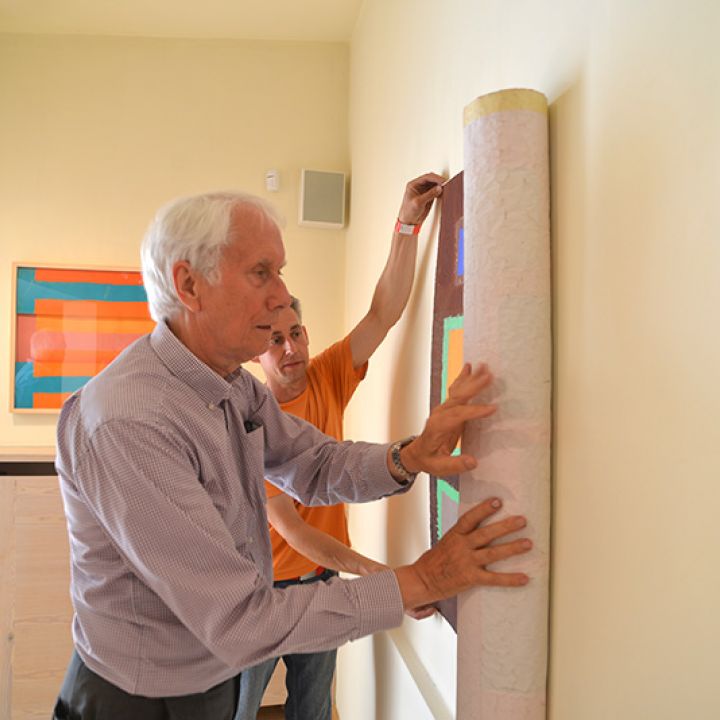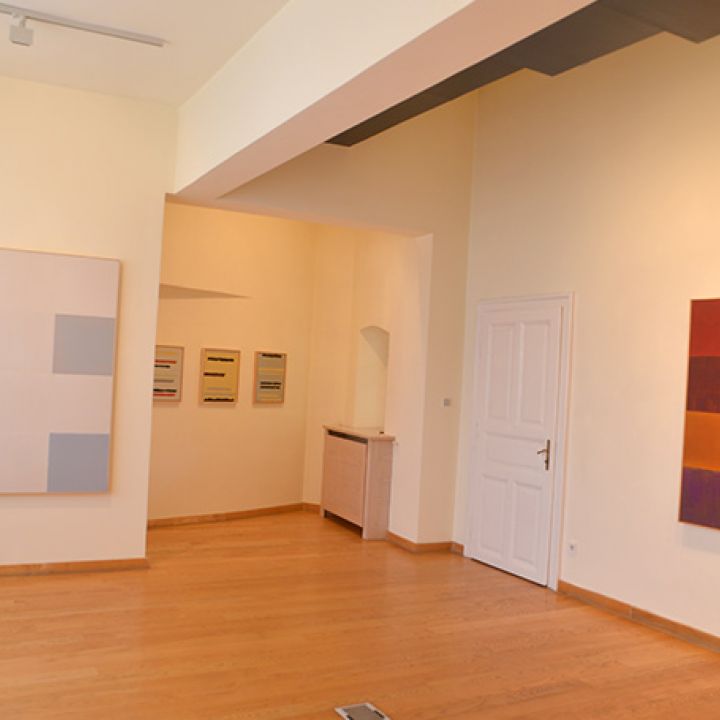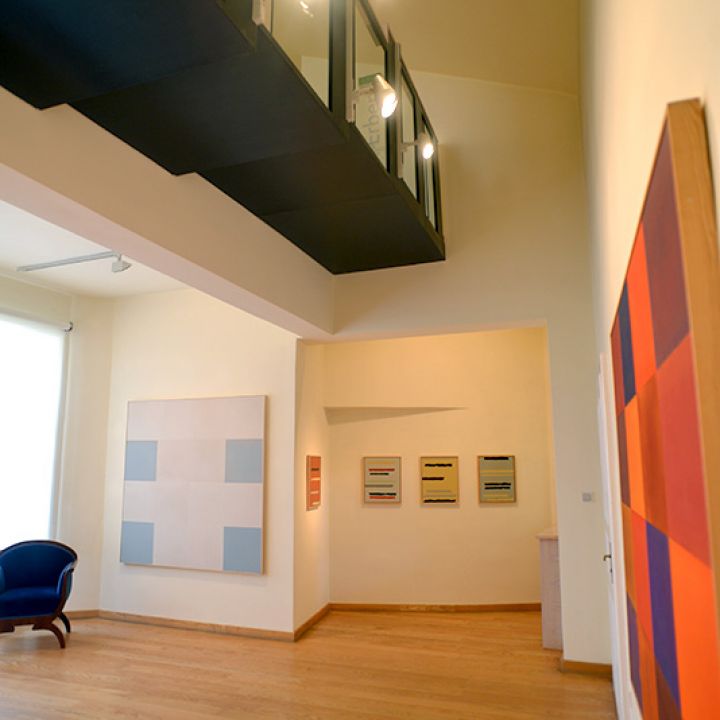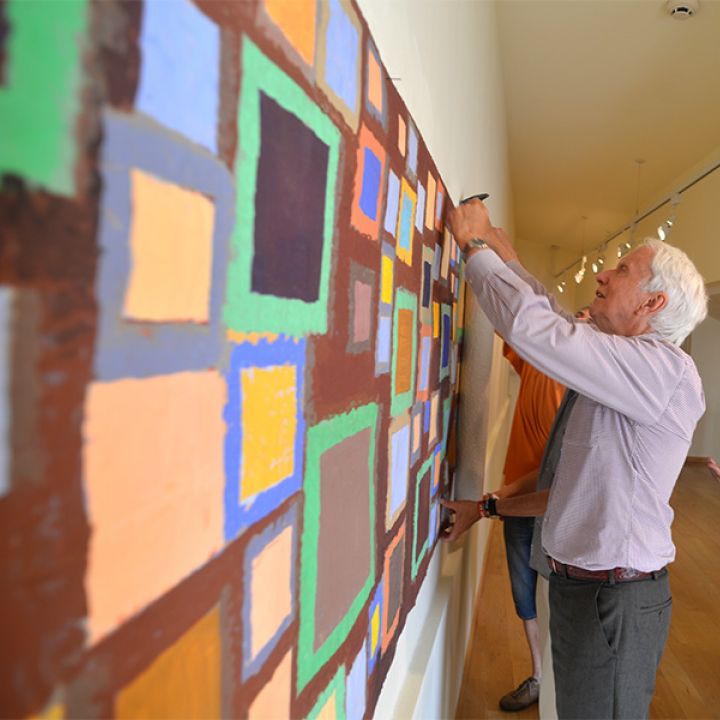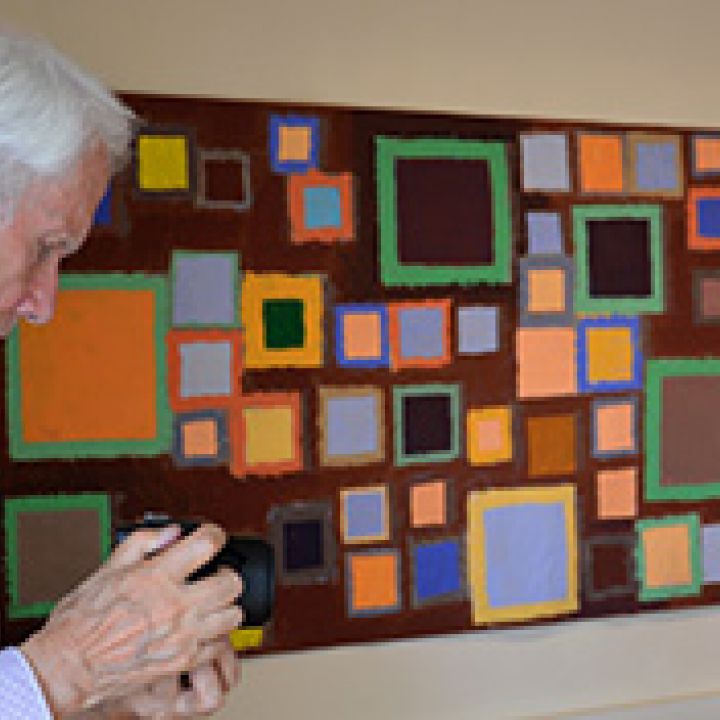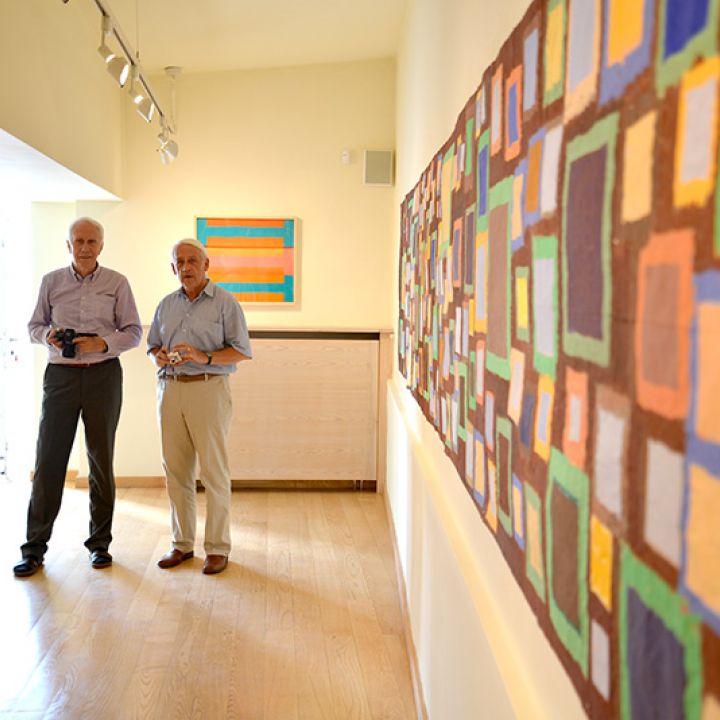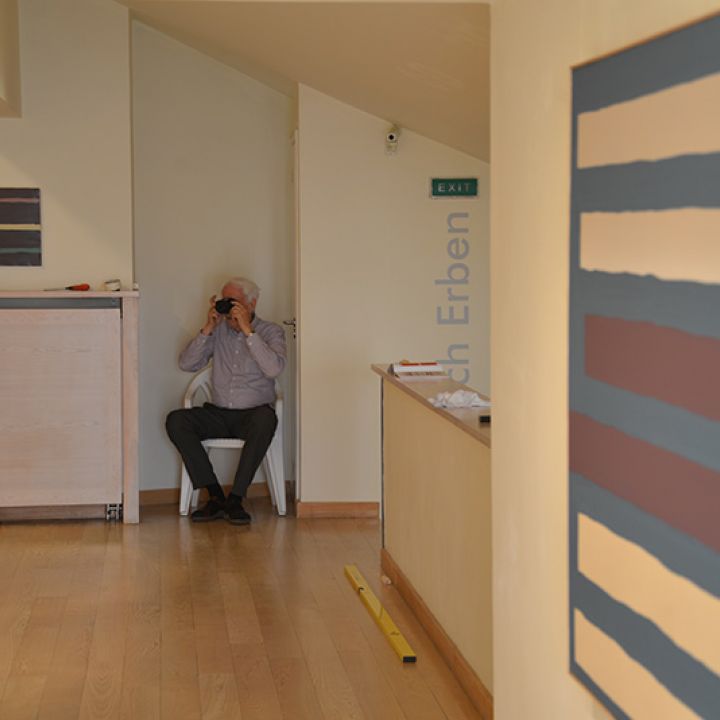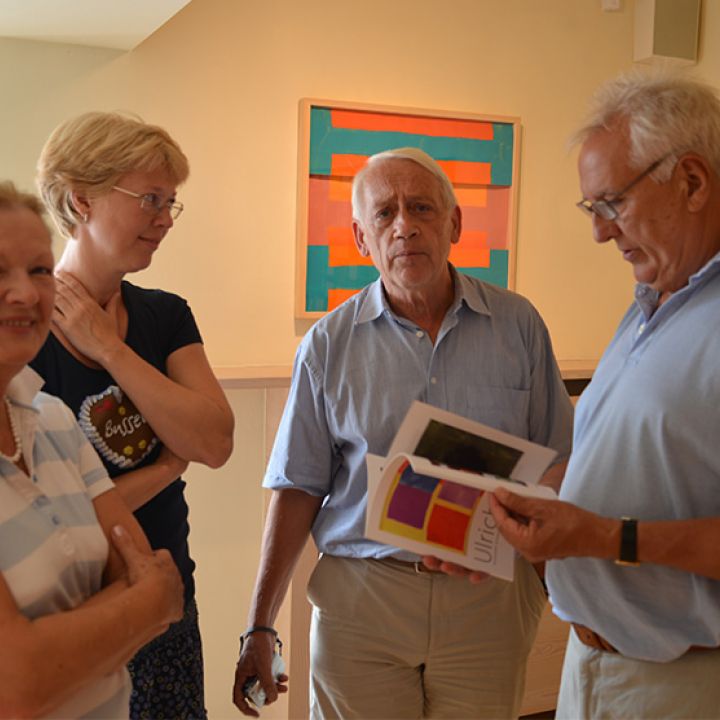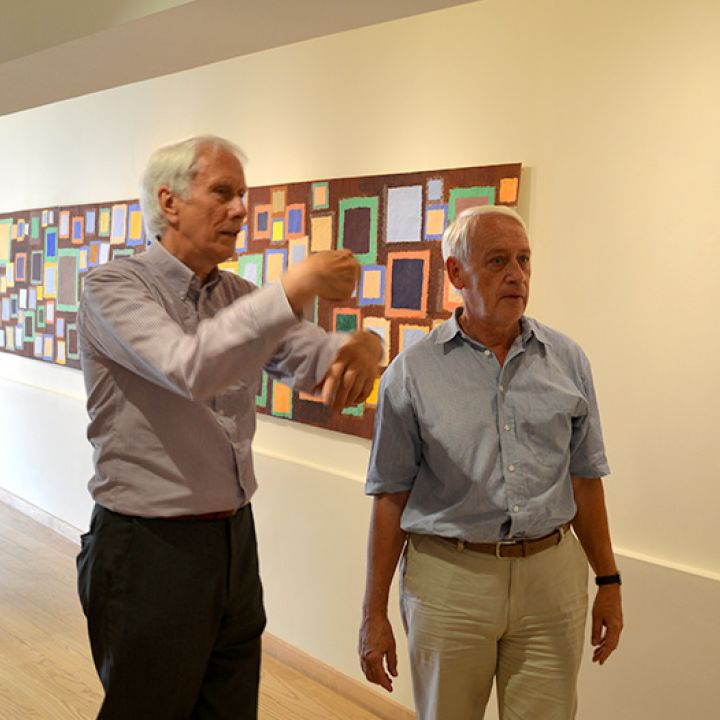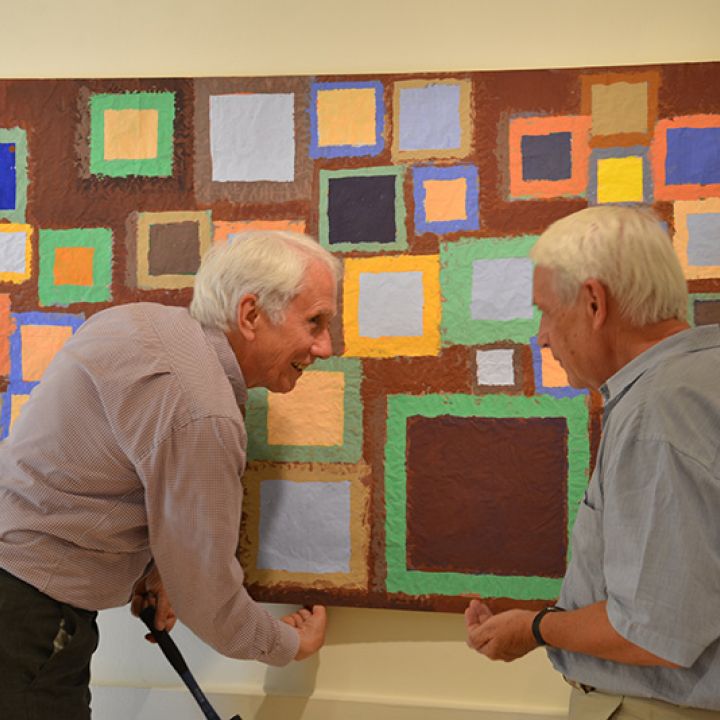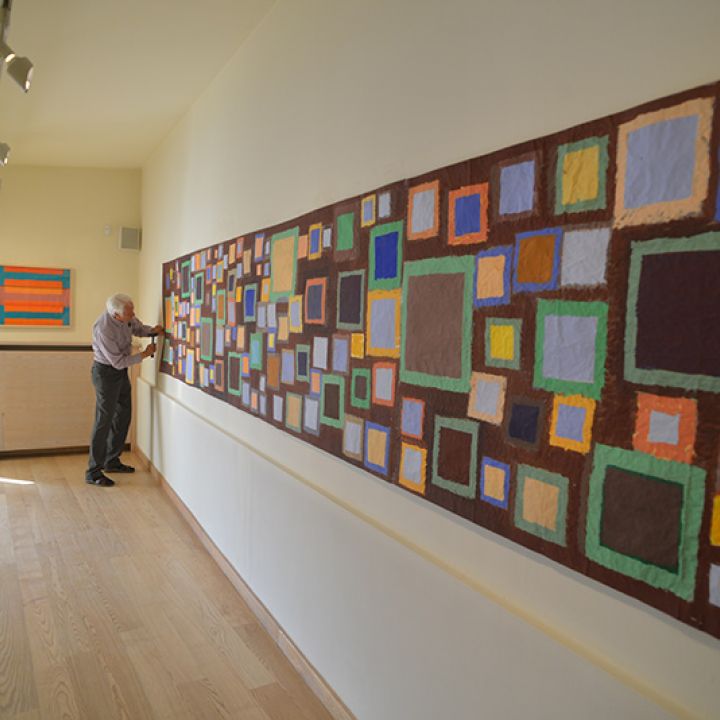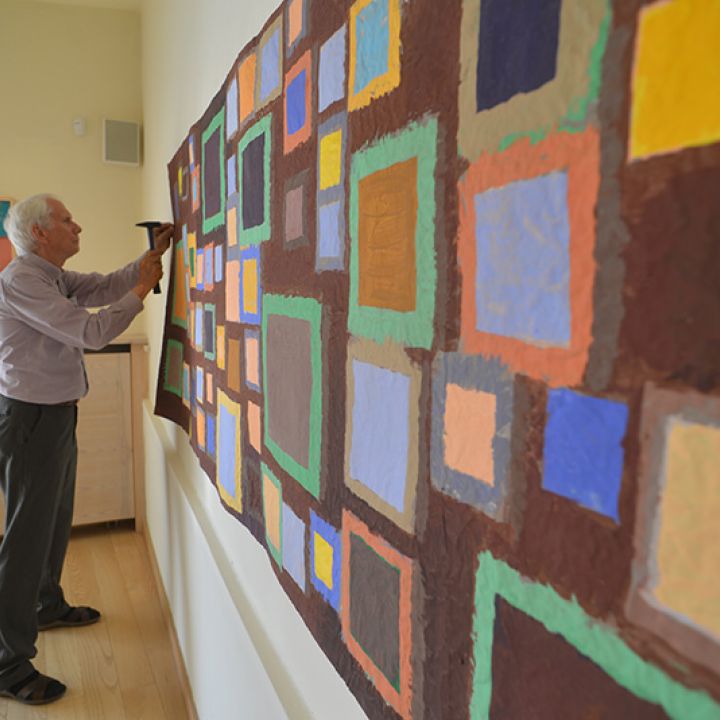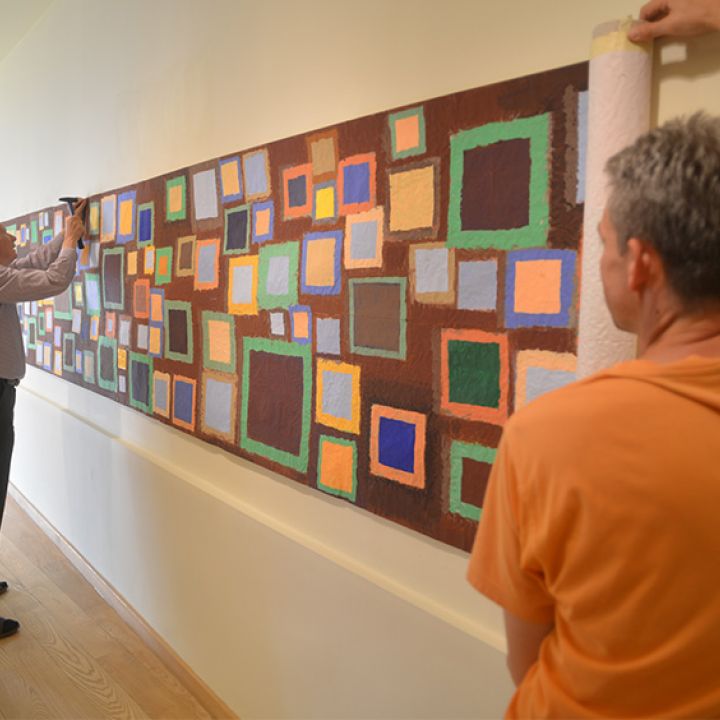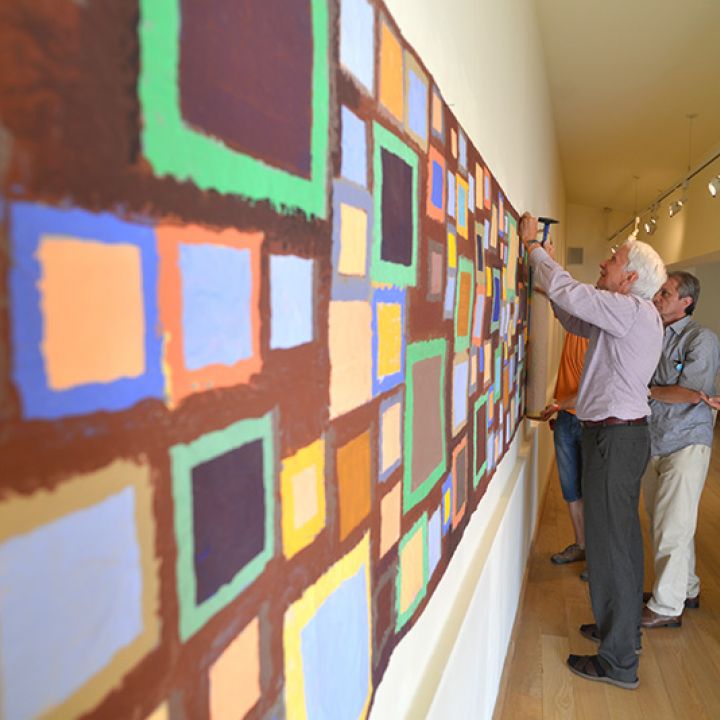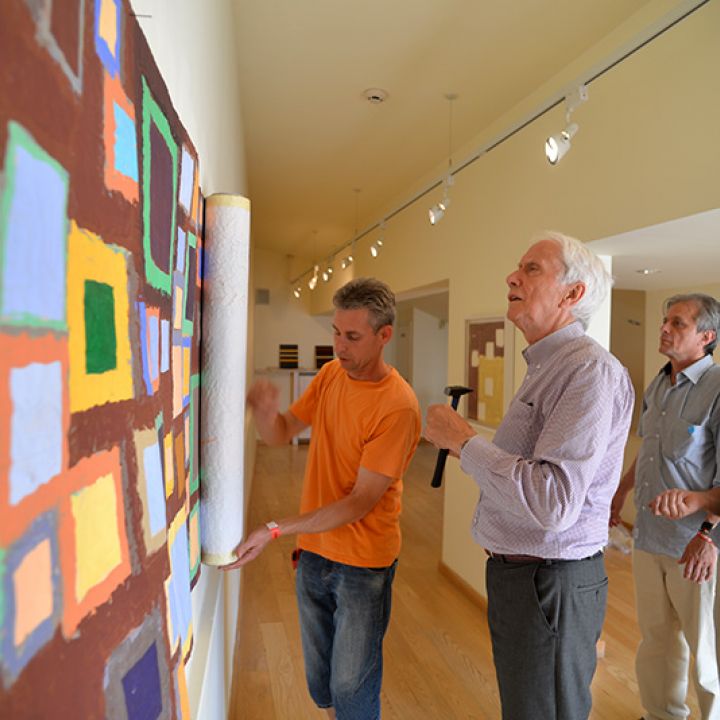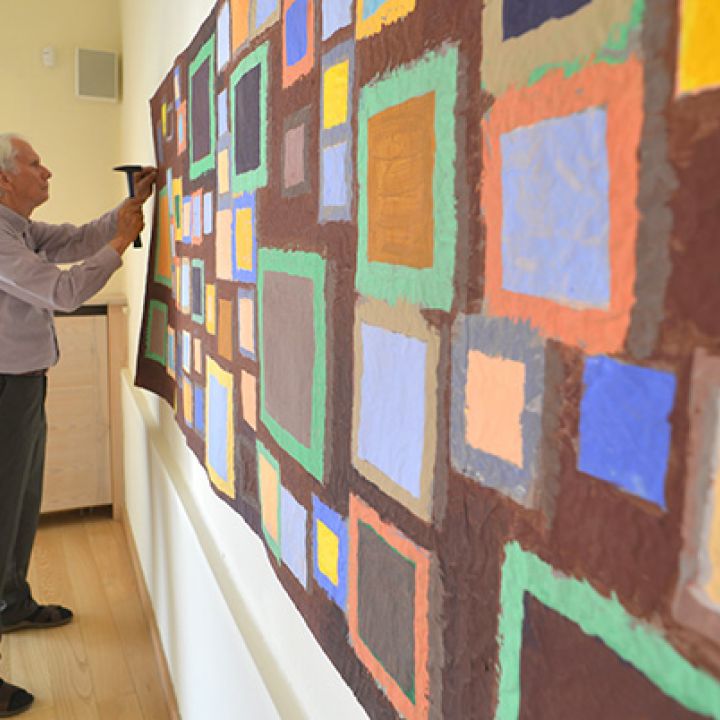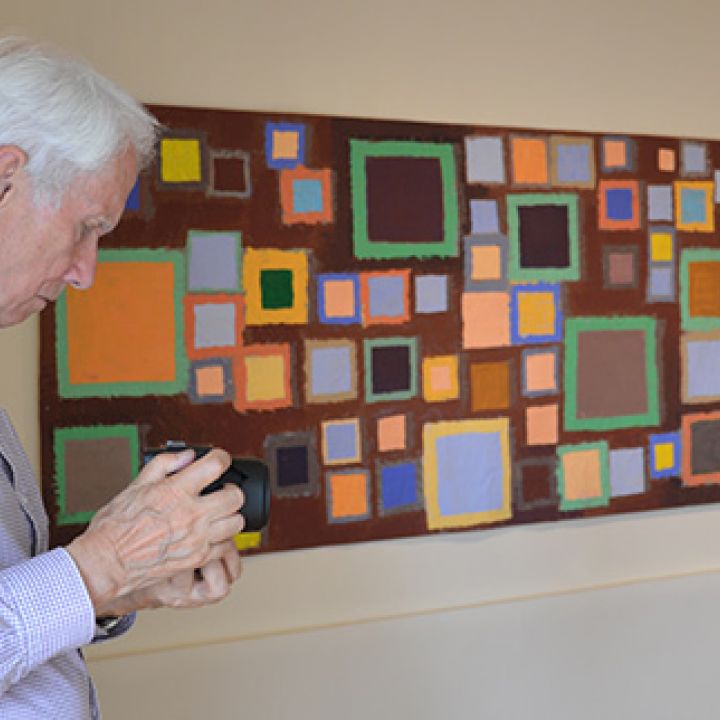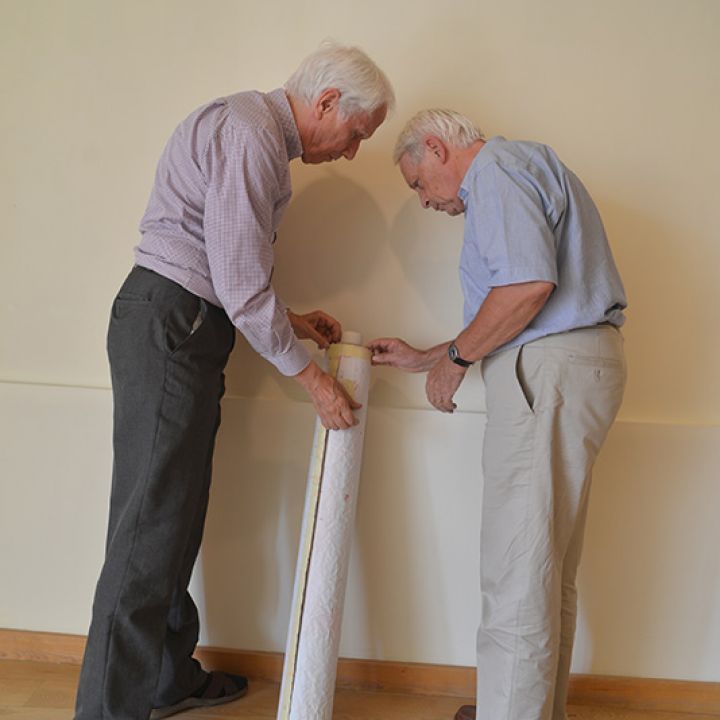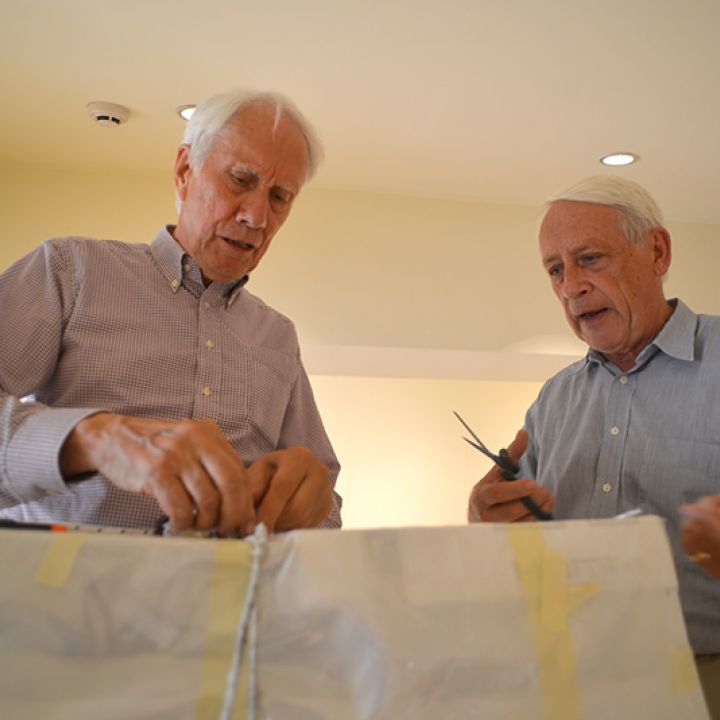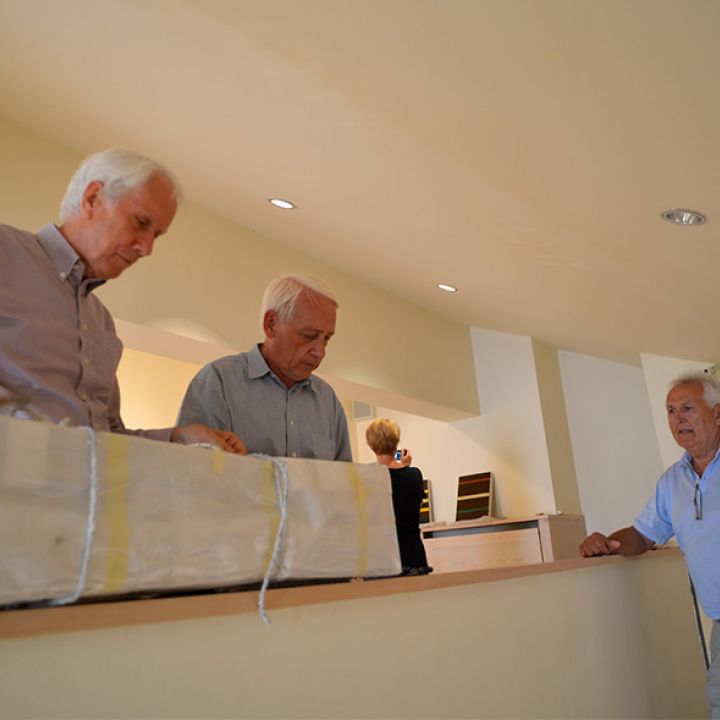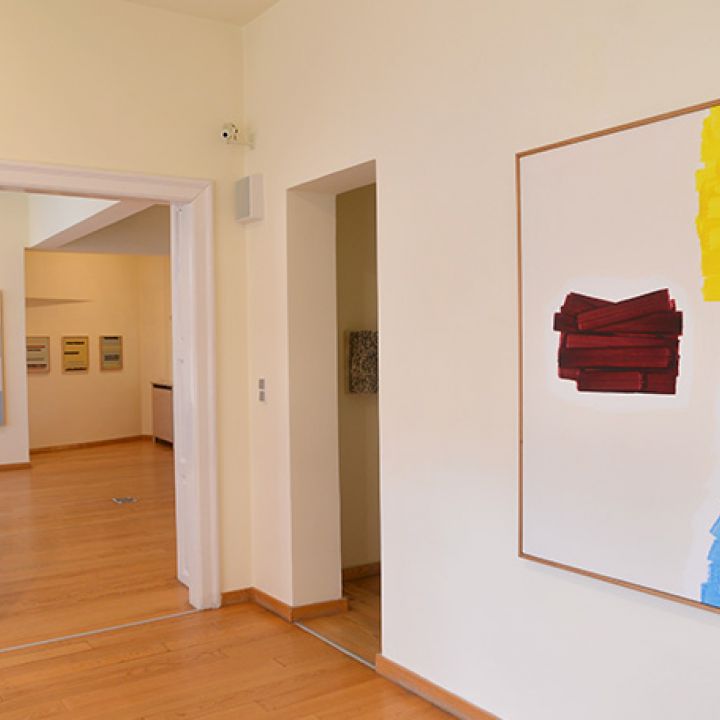For five decades Ulrich Erben's oeuvre has been defined by a consistent condensation of artistic process and the interrelationship between colour, form, light and space. Born in Düsseldorf in 1940 and now living in Düsseldorf and Italy Erben is one of the most important figures in contemporary German art and is internationally recognised as a representative of 'concrete art' and 'colour-field painting'. Neither of these depicts the spectacle, but invents new realities, all the while concentrating on the means of art itself, form and colour. In this, however, he differs from other concrete artists in that he is guided not only by theory but also by sight and thus also adopts the impulse of landscape or colour experiences.
"The young artist studied at the academies of Urbino, Venice, Hamburg, Munich and Berlin and painted landscapes - the starting point for his later work. With his series of so-called White Paintings, which were shown at the 6th Documenta in Kassel in 1977 Erben abandoned the subject matter from the late 1960s onwards. "I came to abstraction," the artist explained in an interview with KUNSTFORUM, "as my figurative paintings became more and more transformed. I was no longer interested in the things depicted, but in questions of space, composition, colour and construction, in other words, concepts outside the representation." The absence of the landscape motif was accompanied for a time by a move away from colour. These white, but by no means monochrome images were born from the idea that the artist should create images free of any representation of reality and any association of images. The flattened canvas contrasted with areas of colour that had been blotted out by white overpaintings and the images, which used minimal shading evoked disorienting spatial experiences and pushed the limits of the eye's perceptual capacity.
From the end of the 1970s colour returned in the works of Ulrich Erben, who also expanded his concept of the image: he built more intensively on the spatial effects of colour, which above all drew their expressive power from the juxtaposition of painted and unpainted surfaces. The full palette of colours was then developed in the Prima Vista works, where the artist applied the colours 'alla prima', i.e. all at once, without any corrections. He never worked exclusively with one colour in a monochrome manner. "It would never occur to me," he said in the KUNSTFORUM interview, "to make a painting with only one colour. You always need a second or a third, which contrasts with it. If I juxtapose brown with teal, I create dependencies - an intrinsic part of my work - but also a balance and a restlessness that are crucial to the overall effect. For me, it is important to create colour tones, but also disharmonious constellations." Erben adds, "I don't work like Ellsworth Kelly or Imi Knoebel, who take a firm stance on a colour, but create tones, tonalities or dissonances." Colour can thus be expressed in all its range, in all its beauty, but also in its contradictions, in its balance between harmony and dissonance. The intensity of the duct gives the impression that the process of painting is spontaneous, but in fact it is based on precise concepts and considerations that do not allow for any subsequent correction.
The Colours of Memory is a series that Erben began in the late 1980s and continues with interruptions to this day. The works fully reflect his conditioned visual experience of landscape and space, thanks to the colour climate of his second Italian homeland and the colour spectrum of the Lower Rhine countryside. One could say that they are similar to Mark Rothko's reddish paintings, in which the atmosphere of the celestial phenomena he experienced as a child in his former Russian Latvia returns. And, like Rothko, Erben wants to find his way beyond the visible part of things, to dive into their mental origins and abstract the concrete image of the landscape with his artistic means.
It is no coincidence that several of Erben's exhibitions (e.g. "What I See", Von der Heydt Museum, Wuppertal 2004) often refer even in their titles to the visual experiences the artist had directly in connection with landscapes, mostly the places of his youth. Both in the works of the cycle The Colours of Memory and in his later, apparently completely abstract paintings, Erben always succeeds in reinterpreting the pictorial surface as a landscape space with few formal devices, a horizontal line or an associative choice of colour. With his latest, even more reduced images Ulrich Erben invites the viewer to a unique visual experience. They take time, require slow, relaxed viewing and thus stimulate sensory impulses and emotional movements. They are never 'empty thought constructs drawn from the spirit of colour, but always mysterious fields of experience drawn from experience', as Heinz-Norbert Jocks observes. Their colour and form evoke their own thoughts, associations and inner images, which make a wide range of emotions, from the calm-meditative to the dynamic-active perceptible and transform the viewer into a participant. During this period, Erben has produced a number of works on paper, parchment and cardboard, some of which have been shown individually and others in series, such as his most recent work, Le Mura (2012).
A recent exhibition by Ulrich Erben was entitled Lust und Kalkül (Pleasure and Calculation). Indeed, these two concepts are united in his work, the joyful flight of fancy and systems thinking. His paintings are geometrically shaped in their basic structure, i.e. they are subject to strict calculations, but their colour treatment is defined by the unbridled joy of exuberant borderlines. Walter Vitt has aptly likened this phenomenon to a process in nature "when plants take over a well-defined garden bed: their spring unfolding, budding, flowering, sprawling and growing, obliterating the order created by the gardener." Let us add that this phenomenon also applies where the rational structure of simple pictorial elements exists in a relationship of emptiness and saturation, of closure and openness. Here neither forms are subordinate to colours, as in the case of Barnett Newman, nor colours to forms, as in the case of Piet Mondrian or many other representatives of constructivism. Colour and form are inextricably linked in Erben's paintings. Neither colour determines form, nor form determines colour, but rather they appear in their mutual, dialectical dependence.
Erben's works are both concise and complex. His set of forms and structures is clear, while imaginative combinations allow him to develop a multitude of new solutions. His typically simple compositions are by no means simplistic. It is a simplicity whose suggestive power is based on an intrinsic contradiction: the apparently simple becomes unexpectedly complex, repetitions are transformed into variations, an endless succession of formal constellations. Erben's art, while committed to the tradition of modernity goes beyond it; he transforms the aesthetics of pure colour and pure form and infuses them with emotion, using the methods of analytical abstraction. A sensual foundation is attached to the just-quoted figure of rational processes in the title of the exhibition. In addition, the existential basis can be felt in each image. In this he assumes that the viewer not only visually reconstructs what he sees and perceives, but also experiences internally that the work of art is part of a world whose basic structures are carried within each individual. Colour and form, both in their component elements and in their overall structure convey feelings, memories and associations, and are assigned to a sphere in which the viewer, in connection with his or her own richness of experience, ultimately completes the picture. All of this forms the human core of Ulrich Erben's art and contributes to its prominence in contemporary art."
Alexander Tolnay

